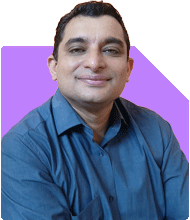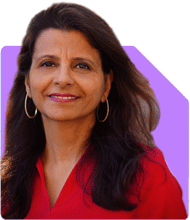Worried About My HbA1c: Can Diet and Walking Reverse It?
Dr Shakeeb Ahmed Khan | Answer |Ask -Follow
Physiotherapist - Answered on Dec 27, 2024
He has served as a technical consultant for the World Health Organisation, the United Nations, the Tata Institute of Social Sciences and several national and international NGOs.
Besides physiotherapy, he is keenly interested in disability management, early intervention, geriatric care and assisting children with disabilities.
Dr Khan has a bachelor's degree in physiotherapy from the Ravi Nair Physiotherapy College in Wardha, Maharashtra, a master's degree in disability rehabilitation administration from the National Institute for the Mentally Handicapped, Secunderabad, and a PhD in disability management from Bangalore University.... more

I am 30 years my hb1ac is 6.4 is maintaining diet and walking 5 kms enough to reverse it
Following a proper diet and walking 5 km daily is a positive start, but it alone may not be enough to reverse the condition. To effectively manage and potentially improve it, focus on creating a calorie deficit, following a low-carbohydrate diet, and incorporating regular exercise. Along with walking, adding resistance training can enhance metabolic health and yield better results.
It’s also essential to seek guidance from a physiotherapist to develop a safe and effective exercise plan and consult a nutritionist for a tailored diet strategy. A combination of these efforts will help you achieve your goals more efficiently.
You may like to see similar questions and answers below
Komal Jethmalani | Answer |Ask -Follow
Dietician, Diabetes Expert - Answered on May 25, 2023
Komal Jethmalani | Answer |Ask -Follow
Dietician, Diabetes Expert - Answered on Jul 29, 2023
Dr Rajiv Kovil | Answer |Ask -Follow
Diabetologist - Answered on Jan 22, 2025
Dr Dipankar Dutta |1837 Answers |Ask -Follow
Tech Careers and Skill Development Expert - Answered on Dec 05, 2025
Dr Shyam Jamalabad |108 Answers |Ask -Follow
Dentist - Answered on Dec 05, 2025
Dr Shyam Jamalabad |108 Answers |Ask -Follow
Dentist - Answered on Dec 05, 2025
Dr Shyam Jamalabad |108 Answers |Ask -Follow
Dentist - Answered on Dec 05, 2025
Dr Dipankar Dutta |1837 Answers |Ask -Follow
Tech Careers and Skill Development Expert - Answered on Dec 05, 2025
Ulhas Joshi |280 Answers |Ask -Follow
Mutual Fund Expert - Answered on Dec 05, 2025
Dr Dipankar Dutta |1837 Answers |Ask -Follow
Tech Careers and Skill Development Expert - Answered on Dec 04, 2025
Ravi Mittal |676 Answers |Ask -Follow
Dating, Relationships Expert - Answered on Dec 04, 2025
Anu Krishna |1745 Answers |Ask -Follow
Relationships Expert, Mind Coach - Answered on Dec 04, 2025
Anu Krishna |1745 Answers |Ask -Follow
Relationships Expert, Mind Coach - Answered on Dec 04, 2025



























